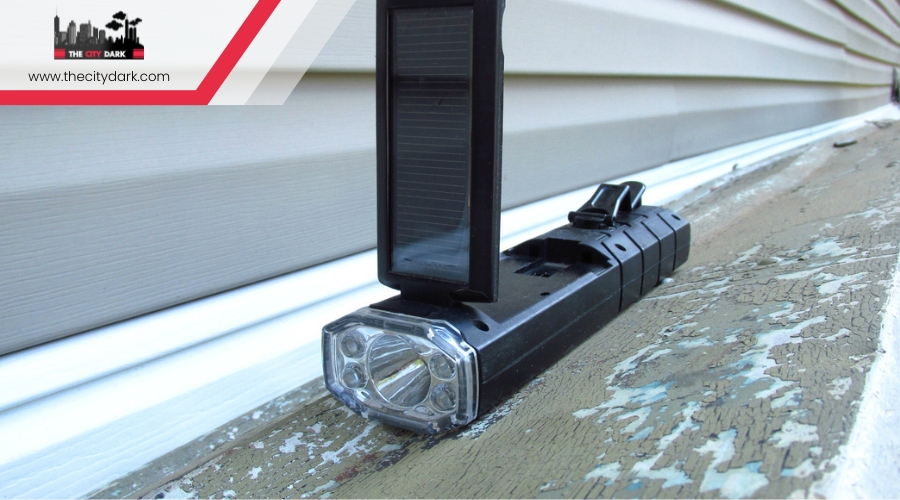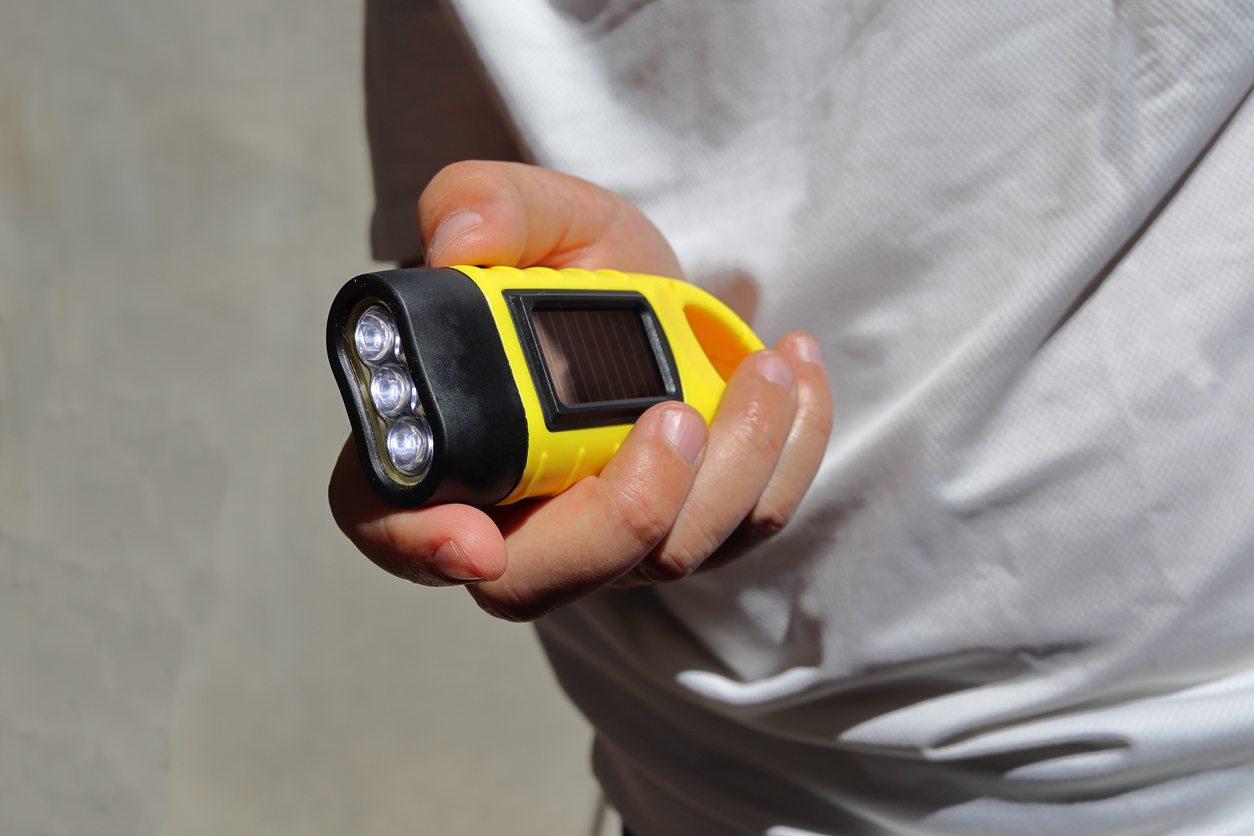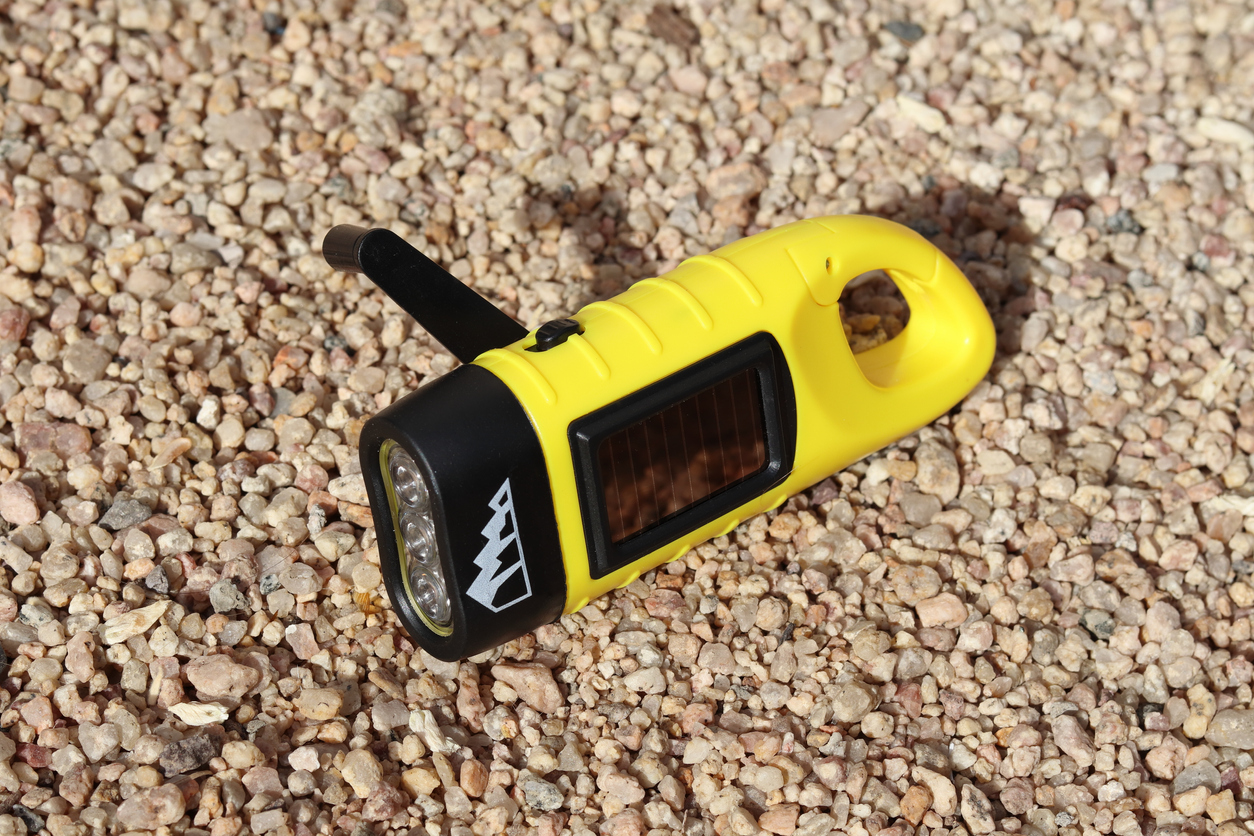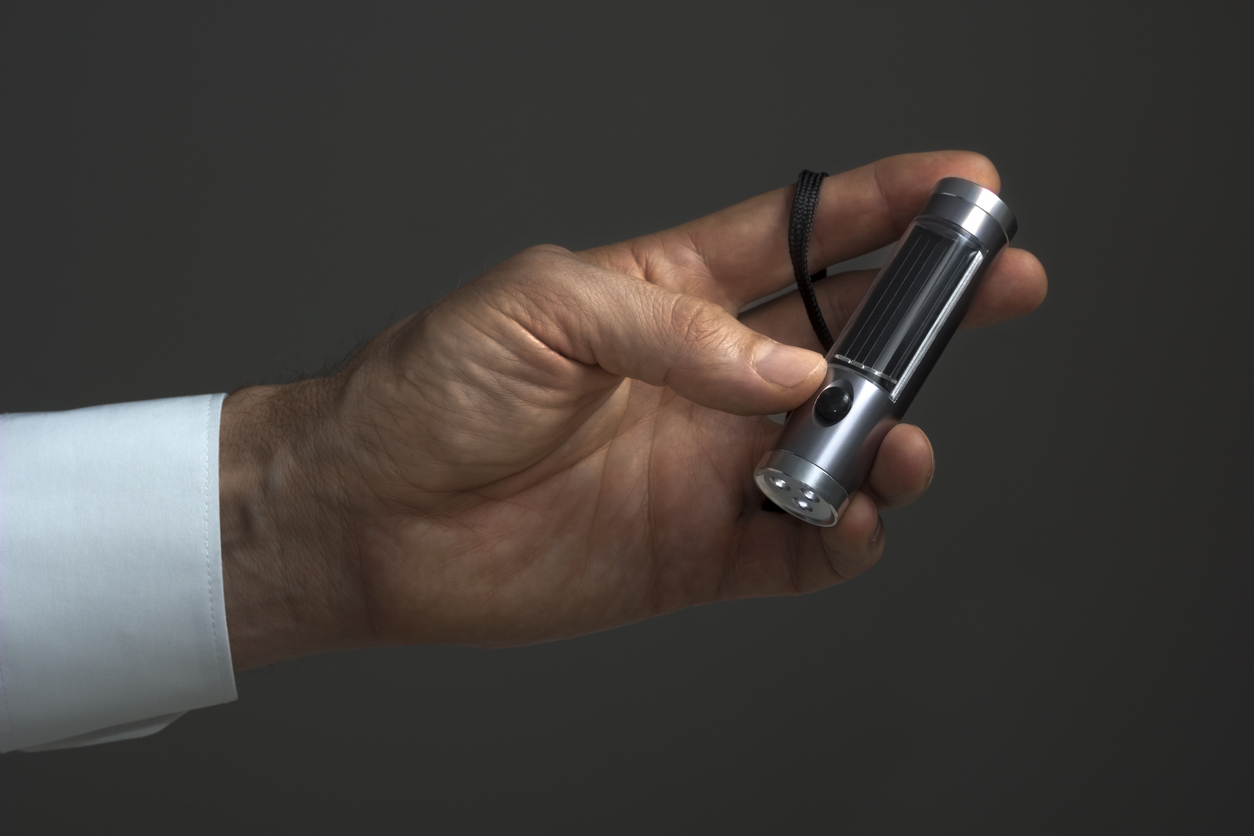Did you know that over 2 billion people worldwide rely on solar energy for their daily electricity needs? This staggering statistic highlights the growing trend towards sustainable energy solutions, including in the realm of personal lighting.
As you consider the shift towards greener alternatives, you might wonder if solar-powered flashlights are up to the task for sustained urban use. These devices offer a promising solution by harnessing sunlight to power LED lights, eliminating the need for disposable batteries and reducing environmental impact. However, questions about their efficiency in low-light conditions, battery life, recharge rates, and overall performance compared to traditional flashlights remain.
As we explore these aspects, you’ll discover the potential of solar-powered flashlights to provide a reliable and sustainable lighting option for urban dwellers.
Key Takeaways
- Solar flashlights harness sunlight through photovoltaic cells for illumination, showcasing the shift towards renewable solar energy.
- Limited sunlight exposure in urban areas can be overcome with advanced photovoltaic panels and strategic placement of solar devices.
- Pollution in urban areas reduces the efficiency of solar panels and undermines efforts to reduce greenhouse gas emissions.
- Storage and portability concerns in dense urban landscapes can be addressed through high-capacity batteries and alternative charging methods like USB charging.
Understanding Solar Flashlights
To grasp the basics of solar flashlights, it’s essential to know they harness sunlight through photovoltaic cells to provide illumination. These devices are a prime example of utilizing solar energy, a renewable energy source, to meet everyday needs.
Solar flashlights, equipped with LED lights, not only offer energy efficiency but also have a significantly longer lifespan compared to traditional bulbs. This is largely due to advancements in solar technology, which have made LED lights and solar panels more effective and durable.
Harnessing solar energy, these flashlights store power in rechargeable batteries, capable of lasting up to two years. This innovation underscores the shift towards renewable solar energy, reducing reliance on non-renewable resources and minimizing environmental impact.
Solar-Powered Street Lights are another testament to the effectiveness of solar panels in urban settings, showcasing how solar energy can be integrated into our daily lives.
Urban Challenges for Solar Devices
In urban environments, you’ll find that solar devices face unique challenges. Limited sunlight exposure due to tall buildings, pollution affecting efficiency, and concerns over storage and portability can hinder their performance. Let’s explore how these factors impact solar-powered flashlights and what solutions might exist.
Limited Sunlight Exposure
Despite their numerous benefits, solar-powered devices in urban areas face the significant challenge of limited sunlight exposure due to tall buildings and narrow streets. This reduced access to sunlight directly impacts their ability to harness solar energy efficiently, affecting both the power and longevity of Lighting solutions like solar-powered street Lights. However, advancements in renewable energy sources and energy storage technologies are continually improving their performance.
| Challenge | Solution |
|---|---|
| Limited sunlight exposure | Advanced photovoltaic panels |
| Energy storage | High-capacity batteries |
| Urban shading | Strategic placement |
| Efficiency | Smart energy systems |
| Aesthetics | Modern design integration |
These innovations ensure that solar-powered Lights remain a viable and sustainable energy solution for urban environments, showcasing the potential to overcome obstacles and contribute significantly to renewable energy goals.
Pollution Impact on Efficiency
Urban pollution significantly reduces the efficiency of solar panels by depositing dirt, dust, and pollutants on their surfaces. This not only impacts the performance of devices like solar-powered flashlights in urban settings but also challenges the broader adoption of solar energy as a clean and renewable energy source.
Consider the following points:
- Urban pollution blocks sunlight, essential for solar energy.
- It increases maintenance needs, affecting overall efficiency.
- Pollution reduces the ability to convert energy from the sun.
- It undermines efforts to reduce greenhouse gas emissions.
- Air quality directly impacts the longevity of solar devices.
Embracing solar energy in urban areas is crucial for reducing carbon emissions and ensuring a sustainable future. However, addressing the environmental impact of pollution is imperative to maximize the efficiency and effectiveness of solar-powered devices.
Storage and Portability Concerns
Solar flashlights face significant storage and portability challenges in urban environments. The dense landscapes of cities make it difficult to harness solar energy, as buildings cast long shadows. Finding a spot to soak up energy during the day can be a real headache. Additionally, the limited battery storage capacity may not hold enough charge for consistent use, especially in remote areas or during periods with low sunlight. While solar street lights and other Light Emitting lights harness solar energy to reduce energy consumption, addressing storage and portability concerns is crucial for personal use. In order to keep your flashlight ready to go, you may need to rely on alternative charging methods, such as USB.
Efficiency in Low-Light Conditions
You might wonder how solar-powered flashlights hold up on cloudy days or indoors, where sunlight seems scarce. Interestingly, these flashlights are designed to charge even under low-light conditions, capturing every bit of available light.
This capability not only ensures they’re always ready for use but also highlights their versatility in urban environments.
Charging on Cloudy Days
Even on cloudy days, your solar-powered flashlight can still soak up some rays, though the charging efficiency might drop due to the weaker light conditions. Embracing solar power means understanding how to maximize its benefits, even when the sun isn’t shining brightly.
Here’s why you should consider harnessing the power of solar energy for your lighting needs:
- Solar street lights offer reliable illumination in remote locations.
- Solar lighting reduces carbon footprint, supporting a greener planet.
- Panels that capture sunlight and convert it into energy work even under overcast skies.
- Efficient solar cells in flashlights can store energy for prolonged use.
- Backup options like hand-cranking provide an alternative during extended cloudy periods.
Positioning your flashlight to capture maximum light ensures you’re never left in the dark, even when the sun is hiding.
Indoor Light Charging Capability
While understanding how to maximize outdoor charging is crucial, it’s also vital to explore how your solar-powered flashlight can efficiently gather energy indoors, even under low-light conditions.
Thanks to technological advancements, solar energy has become a cornerstone in sustainable lighting solutions. Solar flashlights, equipped with photovoltaic cells, demonstrate remarkable indoor light charging capability. They primarily use LED lamps, which require less current and boast a longer lifespan, significantly reducing energy consumption. This integration of solar technology ensures that lights operate reliably, even indoors.
Additionally, the rechargeable batteries in these flashlights, designed to last up to two years, underscore their sustainable nature. Consequently, solar flashlights offer a cost-effective and environmentally friendly option, used to charge and operate efficiently in low-light conditions, reinforcing their value in sustainable lighting solutions.
Battery Life and Recharge Rates
Understanding the battery life and recharge rates of solar-powered flashlights is crucial for maximizing their efficiency and sustainability in urban environments. These innovative devices harness solar energy to light up urban landscapes, offering a clean energy alternative to traditional street lighting. With their batteries lasting up to two years and the use of LED lamps requiring less current for a longer lifespan, they present significant cost savings and environmental impact advantages.
To dive deeper:
- Solar flashlights store solar energy in batteries, eliminating the need for disposable ones and enhancing sustainability.
- Placing them in well-lit areas extends battery life, ensuring they’re always ready when needed.
- Their recharge rates vary based on sunlight availability, emphasizing the importance of strategic placement in smart city planning.
- LED lamps used in these flashlights require less power, contributing to longer battery life and reduced initial investment in energy resources.
- Remote monitoring and control can optimize their usage and efficiency, aligning with smart city goals for Monitoring and Control.
Comparison With Traditional Flashlights
Comparing solar-powered street lights to their traditional counterparts reveals a clear advantage in sustainability and efficiency. Unlike traditional street lights, which rely on a constant supply of electricity, solar street lights harness solar energy. This not only reduces electricity consumption but also significantly cuts down on the carbon footprint associated with lighting up the streets.
Solar-powered lights offer a myriad of advantages. They’re designed to improve visibility and safety on the street, all while highlighting environmental consciousness. The initial setup might seem costly, but the long-term savings in electricity and maintenance costs make them a smart choice. Furthermore, the easy installation and low maintenance of solar street lights contribute to their appeal, especially in urban areas looking to improve safety without disrupting the landscape.
In terms of improving safety and environmental impact, solar street lights stand out. They’re a testament to how urban planning can embrace technology to not only improve safety but also promote sustainability. Traditional street lights, with their higher electricity consumption and maintenance needs, can’t match the efficiency and environmental benefits that solar-powered lights bring to the table.
Real-World Applications and Testimonials
Having explored the advantages of solar-powered street lights, let’s now examine how these innovations have been implemented in cities worldwide and what users have to say about their impact. The real-world applications and testimonials vividly showcase how solar energy is revolutionizing urban landscapes.
- Cities like Copenhagen, Adelaide, and Los Angeles are leading examples of adopting solar street lighting systems, emphasizing their commitment to sustainability and innovation.
- Residents in these areas report an improved sense of safety at night, attributing this to the consistent and reliable lighting provided by solar technology.
- Municipal authorities highlight the significant reduction in operational costs, thanks to the energy efficiency and low maintenance needs of solar lighting systems.
- Environmental advocates praise the reduced environmental impact, noting the decrease in carbon emissions and the contribution to cleaner, greener urban spaces.
- The growing popularity of solar street lights in remote areas showcases their versatility and ability to enhance safety and visibility where traditional power sources are scarce.
These testimonials and applications illustrate the tangible benefits of solar-powered lighting in urban areas, underscoring the advantages of solar energy in reducing operational costs, improving safety, and mitigating environmental impact. The shift towards solar isn’t just a trend but a sustainable solution gaining momentum across the globe.
Conclusion
In conclusion, you’ll find that solar-powered flashlights are a brilliant choice for urban settings. They not only save you money in the long run but also contribute to a healthier planet by reducing battery waste. Despite potential challenges like low-light conditions, their efficient design and rechargeable batteries ensure reliability.
Compared to traditional flashlights, they stand out for their sustainability and cost-effectiveness. Real-world testimonials further confirm their effectiveness, making them an excellent addition to your urban survival kit.




